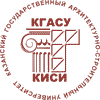About the authors
| First name, Middle name, Last name, Scientific degree, Scientific rank, Current position. Full and brief name of the organization, The organization address. | Nataliia G. Orlova, teaching assistant, Kazan State University of Architecture and Engineering, Kazan, Russian Federation E-mail: This e-mail address is being protected from spambots. You need JavaScript enabled to view it , ORCID: 0000-0002-9194-7800 |
| Title of the article | The identity of industrial cities in Russia and the CIS in the era of globalization: analysis and methods of preservation |
| Abstract. | Problem statement. Industrial cities in Russia and other CIS countries, which developed in the second half of the 20th century, have become symbols of industrial heritage typical for the former Soviet Union. This heritage is based on standardized designs, uniform approaches to architecture and urban planning aimed at rapid urbanization and mass housing construction during the industrialization era. As a result, these cities acquired nearly identical appearance: standardized panel buildings, similar neighborhoods, and gray industrial zones. These features create a specific “uniformity” that affects residents perception of the city and significantly hinders the formation of a unique urban identity. The purpose of the work is to examine the challenges of urban identity in industrial cities in Russia and the CIS and to identify approaches that preserve and strengthen the industrial characteristics of these cities amid contemporary urban homogeneity. The research tasks include examining the formation stages and challenges of industrial cities, analyzing the current state of urban identity in six major industrial centers in Russia and the CIS, and developing a comprehensive approach for the sustainable development of industrial cities. Results. This article explores methods and approaches to preserving the industrial identity of Russian and CIS industrial cities developed in the second half of the 20th century. Built on Soviet urban planning principles, these cities face pressures from globalization and extensive new developments, leading to a significant loss of identity. Based on an analysis of historical experience and contemporary approaches, the study proposes methodological recommendations for preserving the industrial heritage of the second half of the 20th century and fostering a distinctive urban space. The study presents examples of six major industrial cities—Magnitogorsk, Tolyatti, Zaporizhzhia, Pavlodar, Naberezhnye Chelny, and Mogilev—describing their primary identity characteristics and outlining key development directions. Conclusions. A comprehensive approach to preserving industrial identity, involving the restoration and adaptation of historical buildings and industrial sites for new purposes, attracts the interest of local residents, tourists, and investors. This approach enhances the appeal of the urban environment by preserving its historical value and cultural significance, thus increasing its competitiveness. |
| Keywords. | industrial identity, industrial cities, Soviet urban planning, heritage preservation, CIS industrial centers |
| For citations: | Orlova N.G. The identity of industrial cities in Russia and the CIS in the era of globalization: analysis and methods of preservation // News of KSUAE, 2024, № 3(69), p. 216-228, DOI: 10.48612/NewsKSUAE/69.19, EDN: RIBYFW |














